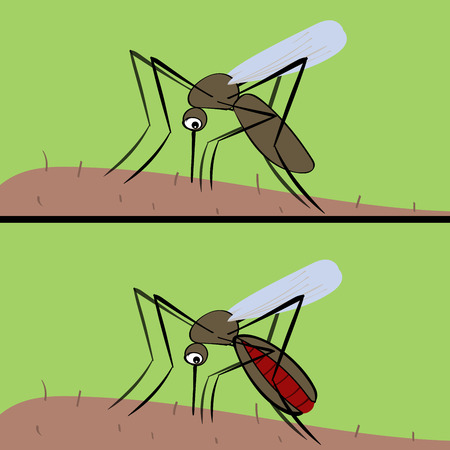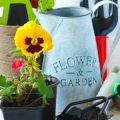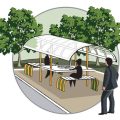The Role of Native Pollinators in American Landscapes
When we wander through an American meadow or pause in a blooming urban garden, we are quietly witnessing a vibrant world at work. Native pollinators—ranging from industrious bees to fluttering butterflies, elusive moths, and more—are unsung heroes shaping the tapestry of our local landscapes. Each region in the United States boasts its own ensemble of these vital creatures, adapted perfectly to its unique climate, flora, and ecological rhythms.
Bees: Champions of Biodiversity
Among native pollinators, bees command a special place. Unlike their European honeybee cousins, native bees such as bumblebees, mason bees, and sweat bees have evolved side by side with North America’s indigenous plants. Their intimate relationships ensure successful pollination for wildflowers and crops alike, supporting food webs that sustain everything from songbirds to mammals.
Butterflies and Moths: Living Works of Art
Butterflies like the monarch and swallowtail captivate us with their color and grace while quietly performing crucial ecological roles. Moths—often overlooked—pollinate nocturnal blooms and act as essential food sources for other wildlife. These winged wonders connect people to the beauty and resilience of local habitats across all seasons.
A Tapestry Woven by Diversity
From the saguaro cactus blooms of the Southwest—visited by specialized long-tongued bees—to the buzzing fields of New England’s goldenrod alive with metallic green sweat bees, every region tells a story through its native pollinators. Their presence is not only a marker of environmental health but also a living testament to the intricate relationships that weave together America’s natural heritage.
2. How Pollinators Shape Local Flora
Native pollinators and local flora are intimately linked through a complex, centuries-old dance of coevolution. This relationship is not merely beneficial but essential, as each partner has influenced the evolution and survival strategies of the other. In diverse American landscapes—from the wildflower meadows of the Midwest to the chaparral of California—native bees, butterflies, moths, birds, and even bats have helped define what thrives in these places. The unique character of each regions ecosystem is often a direct result of the interactions between its specific native plants and pollinators.
The Symbiotic Dance: Coevolution Unveiled
Coevolution describes how two or more species reciprocally affect each other’s evolution. For example, certain flowers have evolved colors, shapes, and blooming times that attract their most effective pollinators. In turn, pollinators may develop specialized body parts or behaviors that enable them to access nectar or pollen more efficiently from those particular plants. This intricate relationship is evident in regional pairings such as hummingbirds with tubular red flowers in the Southwest or bumblebees with deep-throated wildflowers in northern prairies.
Examples of Regional Plant-Pollinator Partnerships
| Region | Native Plant | Main Pollinator | Adaptation Example |
|---|---|---|---|
| Pacific Northwest | Red Columbine (Aquilegia formosa) | Rufous Hummingbird | Nectar-rich spurs match hummingbird beaks |
| Midwest Prairies | Purple Coneflower (Echinacea purpurea) | Bumblebee Species | Sturdy heads support heavy bees; vibrant petals attract sight-oriented bees |
| Southeast Woodlands | American Beautyberry (Callicarpa americana) | Mason Bees & Butterflies | Clustered blossoms provide easy access for multiple pollinators at once |
| Southwest Deserts | Desert Willow (Chilopsis linearis) | Lesser Long-nosed Bat & Native Bees | Tubular flowers open at dusk when bats forage; nectar accessible to both bats and bees during day and night |
The Ripple Effect on Biodiversity and Resilience
This coevolved connection between native flora and pollinators does more than perpetuate individual species—it enhances entire ecosystems. By fostering plant diversity through specialized pollination, native pollinators help create layered habitats that support birds, mammals, insects, and soil organisms. These dynamic relationships buffer local environments against stresses like disease, drought, and climate fluctuations, reinforcing the resilience of America’s beloved natural spaces. Ultimately, understanding this web of mutual influence is crucial for gardeners, conservationists, and anyone invested in preserving the authentic beauty and function of their local landscape.

3. Ecosystem Services: Beyond the Garden
Native pollinators do more than simply grace our gardens with their vibrant presence; they are key players in maintaining the health and resilience of local ecosystems far beyond residential landscapes. Their activity extends into wild meadows, forests, and urban green spaces, weaving a complex web of ecological benefits that sustain both natural and human communities.
Supporting Food Webs
Pollinators act as vital connectors within food webs. By facilitating the reproduction of flowering plants, they ensure the availability of fruits, seeds, and foliage for a diverse array of wildlife—from songbirds to mammals and insects. This ripple effect strengthens biodiversity at every level, creating robust habitats where species can thrive together.
Maintaining Soil Health
The influence of native pollinators reaches underground as well. Healthy populations of pollinated plants foster deeper root systems that prevent erosion, enhance soil structure, and promote beneficial microorganisms. These interconnected processes help retain moisture and nutrients in the soil, supporting everything from native wildflowers to community gardens.
Benefiting Agriculture on a Community Scale
On a broader scale, native pollinators are indispensable partners for local agriculture. Their efficient pollination boosts yields for crops like berries, squash, apples, and almonds—crops that form the backbone of many American farmers’ livelihoods. By supporting native pollinator populations, communities strengthen food security, reduce reliance on costly imported pollination services, and foster agricultural sustainability for future generations.
Together for Thriving Landscapes
The synergy between native pollinators and local ecosystems is a testament to nature’s intricate design. When we protect and encourage these essential creatures, we not only beautify our surroundings but also invest in healthier soils, richer wildlife habitats, and more resilient food systems—benefits that reach far beyond any single backyard or garden fence.
4. Threats Facing Native Pollinators
Native pollinators are essential contributors to the vitality of local ecosystems, yet they face a multitude of threats in the United States that jeopardize their survival and the ecological balance they help sustain. Understanding these challenges is crucial for anyone invested in fostering healthy landscapes and resilient gardens.
Major Challenges Impacting Pollinator Populations
The decline of native pollinators is driven by several interrelated factors. Each threat not only impacts pollinators directly but also disrupts the intricate relationships within local ecosystems. The table below outlines the primary threats facing native pollinators in the U.S.:
| Threat | Description |
|---|---|
| Habitat Loss | Urban sprawl, agricultural expansion, and land development reduce natural habitats, limiting food sources and nesting sites. |
| Pesticide Exposure | Chemicals used in landscaping and agriculture, particularly neonicotinoids, harm pollinators by poisoning or disorienting them. |
| Invasive Species | Non-native plants and animals outcompete or prey on native pollinators, disrupting established ecological networks. |
| Climate Change | Shifts in temperature and weather patterns alter flowering times and migration routes, causing mismatches between pollinators and plants. |
| Urban Development | Increasing concrete surfaces fragment green spaces, making it harder for pollinators to move between resources. |
The Ripple Effect on Local Ecosystems
When these threats converge, the repercussions go beyond individual species—affecting entire plant communities, food webs, and even human food security. The loss of native pollinators can lead to reduced crop yields, diminished wildflower diversity, and weakened ecosystem services such as soil health and water filtration.
Nurturing Resilience Through Awareness
By recognizing these challenges, American homeowners, gardeners, and landscape designers can make informed choices—whether its planting native species, reducing pesticide use, or advocating for pollinator-friendly policies—to support thriving local ecosystems where native pollinators continue to flourish.
5. Designing Pollinator-Friendly Landscapes
Creating landscapes that celebrate both native pollinators and regional character is a rewarding way to support local ecosystems. By thoughtfully selecting plants and arranging outdoor spaces, you can cultivate gardens and wildflower meadows that are as beautiful as they are beneficial. Here’s how you can design pollinator-friendly landscapes that honor your region’s natural heritage while nurturing essential pollinator populations.
Start with Native Plants
Native plants form the backbone of any successful pollinator garden. These species have co-evolved with local pollinators, providing the nectar, pollen, and habitat they need to thrive. Choose a variety of flowers, shrubs, and trees that bloom at different times throughout the growing season—ensuring a continuous food source from early spring through late fall. Consult regional plant lists or your local extension office for guidance on the best options for your area.
Embrace Wildflower Meadows
Transforming a portion of your yard into a wildflower meadow is a vibrant way to support bees, butterflies, moths, and other beneficial insects. Select a native wildflower seed mix suited to your soil type and sunlight conditions. Prepare the site by removing existing turf grass and lightly tilling the soil before sowing seeds in late fall or early spring. Resist the urge to over-maintain—meadows thrive with minimal mowing and no chemical inputs.
Create Diverse Habitats
Pollinators need more than just flowers; they benefit from diverse habitats that offer nesting sites, shelter, and water sources. Incorporate features such as brush piles, patches of bare ground for ground-nesting bees, small logs, and shallow water dishes with stones for safe drinking. Layering plants of different heights—from groundcovers to tall perennials and trees—creates structure and microclimates within your landscape.
Minimize Pesticide Use
Avoid using synthetic pesticides, herbicides, or fungicides whenever possible, as these chemicals can harm pollinators directly or contaminate their food sources. Instead, encourage natural pest control by supporting healthy insect populations and practicing integrated pest management strategies.
Celebrate Regional Beauty
Honor your region’s unique character by incorporating locally iconic plants and designing with natural forms in mind. Blend formal beds with wilder areas to evoke a sense of place, allowing your landscape to become both a sanctuary for pollinators and a living expression of your community’s ecological story.
6. Community Action and Conservation
Across the United States, meaningful conservation begins at the grassroots level. When individuals, neighborhoods, and organizations collaborate for native pollinator protection, they spark a ripple effect that benefits entire local ecosystems. One of the most impactful ways to support pollinators is by creating or restoring habitats using native plants in home gardens, schoolyards, and public spaces. These green sanctuaries not only provide food and shelter for bees, butterflies, and other vital species but also foster a deeper sense of stewardship among community members.
Building Pollinator-Friendly Communities
Neighborhoods can join forces by establishing pollinator pathways—corridors of native flowers and nesting sites connecting parks, yards, and greenways. Community gardens and demonstration landscapes serve as living classrooms, where residents learn about the value of native species and sustainable gardening practices. Local businesses, schools, and faith-based groups can also partner on planting events or educational workshops that celebrate pollinator diversity while nurturing a shared commitment to ecological resilience.
Organizational Support and Advocacy
Local nonprofits, master gardener programs, and conservation districts offer resources for those eager to make a difference. These organizations often provide region-specific planting guides, host seed swaps, or coordinate citizen science projects that monitor pollinator populations. By advocating for pollinator-friendly policies—such as reducing pesticide use and supporting urban green space initiatives—community members amplify their impact beyond individual backyards.
A Call to Stewardship
The health of America’s landscapes depends on collective action. Whether you’re planting milkweed for monarch butterflies or joining a citywide habitat restoration project, every effort counts. By nurturing connections with nature and each other, communities become resilient havens where both people and pollinators thrive. This shared journey toward conservation is not just about protecting insects—it’s about cultivating beauty, balance, and hope within our local ecosystems.

